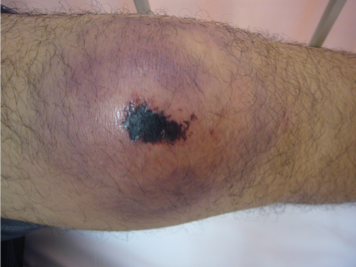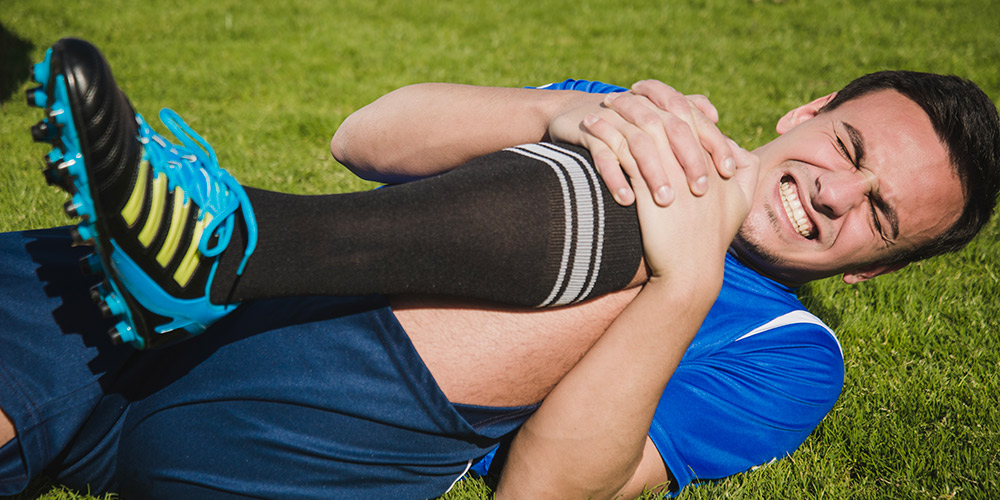A Guide to Sports Injuries from Prevention to Treatment
09 April 2019
Sports are essential part of modern living. We participate in sports for recreation and health reasons, both which are important for good quality of life. Injuries are the main hindrance for continuing sports, be it temporary or permanent. It also decreases our performance and enjoyment in sports.
Types of sports injuries depends on
- Tissue involved: Ligament, tendon, muscle, cartilage or bone
- Duration of injury: Acute or chronic
How Do Sports Injuries Happen?
When excessive load is applied to any tissue above the maximum tolerable limit, injuries occur. Thus it is influenced by the strength of the tissue and the amount of force applied (Figure 1). Mechanism of how the force is applied is important factor determining if injuries occur. According to law of physics, the longer the level arm, the greater the amount of force.

Figure 1
Carrying the same weight of outstretched hands will cause more stress to your back than carry similar weight with elbows bent. Limb alignment is another factor determining severity of injury. If your knee is bowed, excessive force will be loaded to inner aspect thus accelerating wear and tear of cartilage.
Amount of force can be one single blow that leads to acute injury of excessive cumulative loads leads to chronic injury. Human body has the ability of self -healing. Higher potential of healing leads to less cumulative injuries. This is why we see less chronic injury in young patient.
How to Prevent Sport Injuries?
You can prevent sports injuries by either decreasing the load applied to the tissue or increasing the strength of your tissue.
To decrease load, you can
1. Avoid aggressive sports
2. Warm up and stretch to make the tissue supple thus reduce the tensile stress on tissue
3. Wear protective gear like a knee guard
4. Apply proper technique e.g. smashing a shuttlecock with arm across the body instead of directly downward swing to reduce stress on shoulder muscle
5. Gradually build up your exercise load instead of sudden increment. Do not run a marathon if you have not trained for it.
To increase strength of tissue, you can perform
1. Training: proper technique and method are important to reduce injury
2. Supplement: Glucosamine can help to strengthen injured cartilage
Treatment for acute injury: R.I.C.E. plus anti-inflammatory medication.
R.I.C.E. stands for rest, ice, compression and elevation.
- Rest: stop weight bearing, use crutches, brace, stop sports activities etc.
- Ice: Apply ice to the injured area as soon as possible, then 3 to 4 times a day
- Compression: bandage, compression stocking
- Elevation: elevate the injured limb
Anti-inflammatory medication can be taken orally or applied directly onto the injured area.
Treatment for chronic repetitive injuries e.g. tennis elbow
- Rest and stop the trigger (typically racquet game or golf)
- Stretching
- Local treatment: ointment, physiotherapy e.g. ultrasound or shockwave
- Brace e.g. tennis elbow brace, wrist splint
- Injection of anti-inflammatory medication into the injured area.
Get Medical Consultation
It is important to get medical consultation as early as possible, so as not to miss the golden opportunity for early treatment if indicated. Certain sports injury will have poor outcome if not treated early. Knee meniscus injury locking the knee motion needs immediate surgery whereas collateral ligament does not need operation.
Both conditions can present as acute pain on medial aspect of the knee. The red flag signs that serve as a warning that something is terribly wrong are: excessive swelling, excessive loss of function/range of motion. Immediate medical assessment is important. If unsure, it’s better to err on the safe side, which is to get proper medical consultation before attempting self treatment or traditional treatment.
Imaging
X-ray is important to rule out a fracture. An ankle fracture, even if minimally displaced will need surgical fixation. However fracture on foot can be treated non-operatively even if the fracture is grossly displaced. It is unfortunate that I still see patients with neglected fracture of ankle not treated properly with guaranteed poor outcome.
MRI scan is essential if cartilage or ligament injury is suspected. Sunway Medical Centre is equipped with high resolution 3T MRI capable of producing high quality and clear image. Knee cruciate ligament injury needs surgical reconstruction, but collateral ligament injury is usually treated non operatively. Weather cartilage injury need surgery will depend on the size and location of the injury. (Figure 2)

Figure 2

Figure 2
Arthroscopic Anterior Ligament Reconstruction of the Knee
Most of sports injuries, either ligament or cartilage, are operated using arthroscopic keyhole technique. (Figure 3) Arthroscopic surgeries offer faster recovery, minimal surgical scar, less pain, and less bleeding. Patients can be discharged from hospital two days after knee anterior cruciate ligament reconstruction. Most patients do not need strong pain killer post-operatively.

Knee Brace

Soft tissue injury
Patients are allowed to walk with crutches support the next day after surgery. After surgery, patients need to train the newly reconstructed ligament. Intensive post-operative physiotherapy is essential for good functional outcome.
The modern anterior cruciate ligament reconstruction techniques are more anatomical, closely resembling native anterior cruciate ligament, thanks to the Japanese studies that has been popularized by the Americans. With modern technique, patient will enjoy almost full range of knee motion after anterior cruciate ligament reconstruction and able to returned to sports earlier.







